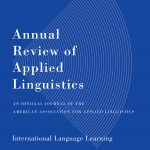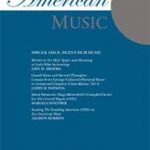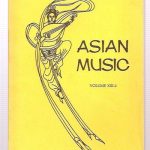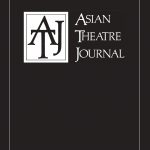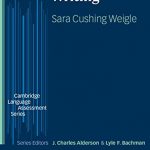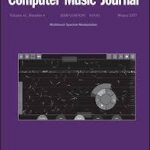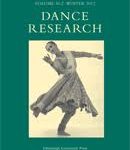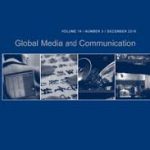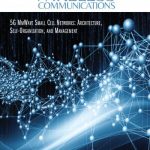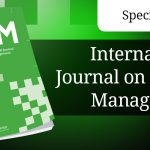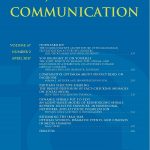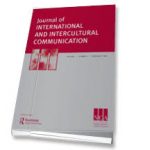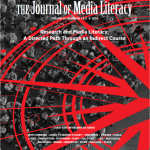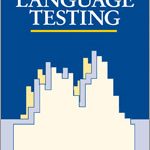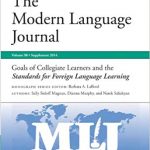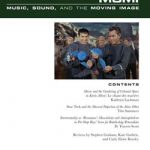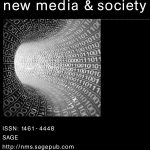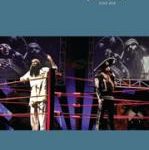The Annual Review of Applied Linguistics publishes research on key topics in the broad field of applied linguistics. Each issue is thematic, providing a variety of perspectives on the topic through research summaries, critical overviews, position papers and empirical studies. Being responsive to the field, some issues are tied to the theme of that year’s annual conference of the American Association for Applied Linguistics. Also, at regular intervals an issue will take the approach of covering applied linguistics as a field more broadly, including coverage of critical or controversial topics. ARAL provides cutting-edge and timely articles on a wide number of areas, including language learning and pedagogy, second language acquisition, sociolinguistics, language policy and planning, language assessment, and research design and methodology, to name just a few.
American Music is an independent, peer-reviewed journal published quarterly by the University of Illinois Press. Its articles, reviews, and special issues are devoted to American music in the broadest sense, including musical practices of North, South, and Central America as well as American musics performed anywhere in the world.
Asian Theatre Journal is dedicated to the performing arts of Asia, focusing upon both traditional and modern theatrical forms. It aims to facilitate the exchange of knowledge throughout the international theatrical community for the mutual benefit of all interested scholars and artists. This engaging, intercultural journal offers descriptive and analytical articles, original plays and play translations, book and audiovisual reviews, and reports of current theatrical activities in Asia. Full-color plates and black-and-white photographs illustrate each issue.
Assessing Writing is a refereed international journal providing a forum for ideas, research and practice on the assessment of written language. Assessing Writingpublishes articles, book reviews, conference reports, and academic exchanges concerning writing assessments of all kinds, including traditional (‘direct’ and standardised forms of) testing of writing, alternative performance assessments (such as portfolios), workplace sampling and classroom assessment. The journal focuses on all stages of the writing assessment process, including needs evaluation, assessment creation, implementation, and validation, and test development; it aims to value all perspectives on writing assessment as process, product and politics (test takers and raters; test developers and agencies; educational administrations; and political motivations). The journal is interested in review essays of key issues in the theory and practice of writing assessment.
Assessing Writing embraces internationalism and will attempt to reflect the concerns of teachers, researchers and writing assessment specialists around the world, whatever their linguistic background. Articles are published in English and normally relate to the assessment of English language writing, but articles in English about the assessment of writing in languages other than English will be considered. While Assessing Writing frequently publishes articles about the assessment of writing in the fields of composition, writing across the curriculum, and TESOL (the teaching of English to speakers of other languages), it welcomes articles about the assessment of writing in professional and academic areas outside these fields.
The scope of the journal is wide, and embraces all work in the field at all age levels, in large-scale (international, national and state) as well as classroom, educational and non-educational institutional contexts, writing and programme evaluation, writing and critical literacy, and the role of technology in the assessment of writing. Through this scholarly exchange, Assessing Writingcontributes to the development of excellence in the assessment of writing in all contexts, and, in so doing, to the teaching and appreciation of writing.
Computer Music Journal is published quarterly with an annual sound and video anthology containing curated music¹. For four decades, it has been the leading publication about computer music, concentrating fully on digital sound technology and all musical applications of computers. This makes it an essential resource for musicians, composers, scientists, engineers, computer enthusiasts, and anyone exploring the wonders of computer-generated sound.
Edited by experts in the field and featuring an international advisory board of eminent computer musicians, issues typically include:
- In-depth articles on cutting-edge research and developments in technology, methods, and aesthetics of computer music
- Reports on products of interest, such as new audio and MIDI software and hardware
- Interviews with leading composers of computer music
- Announcements of and reports on conferences and courses in the United States and abroad
- Publication, event, and recording reviews
- Tutorials, letters, and editorials
Global Media and Communication is an international, peer-reviewed journal that provides a platform for research and debate on the continuously changing global media and communication environment. Its scope includes communication and media studies, anthropology, sociology, telecommunications, public policy.
IEEE Wireless Communications is designed for audience working in the wireless communications and networking communities. It covers technical, policy and standard issues relating to wireless communications in all media (and combinations of media), and at all protocol layers. All wireless/mobile communications, networking, computing and services will be covered. Each issue of this interdisciplinary magazine provides tutorial articles of high quality and depth concerning the revolutionary technological advances in wireless/mobile communications, networking and computing.
The International Journal on Media Management provides a global examination of the fields of media and telecommunications management, with a strong emphasis on management issues. The goal of the journal is to offer a close analysis of new industry structures, organizational forms, and critical competencies in the changing media environment. The journal serves as a forum for discussion, bringing together academics and industry figures to explore the transition from “classic” to “new” media and to identify the factors that will determine organizational and economic success in a fast-changing and converging environment.
The International Journal on Media Management embraces a wide and rich array of media related issues and focuses on the changes in this field evoked by rapid technical developments and convergence in the media industry and communications.
Communication Theory is an international forum publishing high quality, original research into the theoretical development of communication from across a wide array of disciplines, such as communication studies, sociology, psychology, political science, cultural and gender studies, philosophy, linguistics, and literature.
A journal of the International Communication Association, Communication Theory especially welcomes work in the following areas of research, all of them components of ICA: Communication and Technology, Communication Law and Policy, Ethnicity and Race in Communication, Feminist Scholarship, Global Communication and Social Change, Health Communication, Information Systems, Instructional/Developmental Communication, Intercultural Communication, Interpersonal Communication, Journalism Studies, Language and Social Interaction, Mass Communication, Organizational Communication, Philosophy of Communication, Political Communication, Popular Communication, Public Relations, Visual Communication Studies, Children, Adolescents and the Media, Communication History, Game Studies, Gay, Lesbian, Bisexual and Transgender Studies, and Intergroup Communication. The journal aims to be inclusive in theoretical approaches insofar as these pertain to communication theory.
The Journal of International and Intercultural Communication (JIIC) is a peer-reviewed publication of the National Communication Association. JIIC publishes original scholarship that expands understanding of international, intercultural, and cross-cultural communication. Widely interdisciplinary, JIIC features diverse perspectives and methods, including qualitative, quantitative, critical, and textual approaches to intellectual inquiry.
The Journal of Media Literacy Education (JMLE.org) is an online interdisciplinary journal that supports the development of research, scholarship and the pedagogy of media literacy education.
The journal provides a forum for established and emerging scholars, media professionals and educational practitioners in and out of schools. As an extended conceptualization of literacy, media literacy education helps individuals of all ages develop habits of inquiry and skills of expression needed to become critical thinkers, effective communications and active citizens in a world where mass media, popular culture and digital technologies play an important role for individuals and society. You can read and respond to the latest issue on our new JMLE blog at namle.net.
Language Testing is a fully peer reviewed international journal that publishes original research and review articles on language testing and assessment. It provides a forum for the exchange of ideas and information between people working in the fields of first and second language testing and assessment. This includes researchers and practitioners in EFL and ESL testing, and assessment in child language acquisition and language pathology. In addition, special attention is focused.
Music, Sound, and the Moving Image is the first international scholarly journal devoted to the study of the interaction between music and sound in moving image media – film, television, music video, advertising, computer games, mixed-media installation, digital art, live cinema, et alia.
Co-edited by Helen Hanson (University of Exeter), Jay Beck (Carleton College) and Ian Gardiner (Goldsmiths), the journal is truly interdisciplinary, inviting contributions across a range of critical methodologies, including musicology and music analysis, film studies, popular music studies, cultural theory, aesthetics, semiotics, sociology, marketing, sound studies, and music psychology.
The journal also provides an important focus for the similarly diverse and expanding community of media music scholars. The journal is published twice a year, and its first issues were open, embracing this diversity of topics and approaches. Themed issues, under a guest editor, now alternate with open issues, encouraging writers to explore areas under-represented in current literature.
The editors welcome contributions offering the broadest interpretation of the journal’s title, not only seeking to build upon the existing scholarship on film music and film sound, but also to challenge its theoretical assumptions, and to extend its boundaries to include the full variety of moving image media and traditions.
Papers appearing in this journal are abstracted or indexed in: Scopus, Emerging Sources Citation Index, Sustainability and Natural Resource Management database, The Music Index Online, International Index to Film Periodicals.
Not only a key resource for keeping up to date in this fast-moving field, this journal is proving a vital resource for wide-ranging, insightful analyses of the social contexts and consequences of new information and communication technologies.” Sonia Livingstone
New Media & Society is an international journal that provides an interdisciplinary forum for the examination of the social dynamics of media and information change.
New Media & Society engages in critical discussions of the key issues arising from the scale and speed of new media development, drawing on a wide range of disciplinary perspectives and on both theoretical and empirical research.
For six decades, Theatre Journal‘s broad array of scholarly articles and reviews has earned it an international reputation as one of the most authoritative and useful publications of theatre studies available today. Drawing contributions from noted practitioners and scholars, Theatre Journal features social and historical studies, production reviews, and theoretical inquiries that analyze dramatic texts and production. Theatre Journal is an official publication of the Association for Theatre in Higher Education (ATHE).
